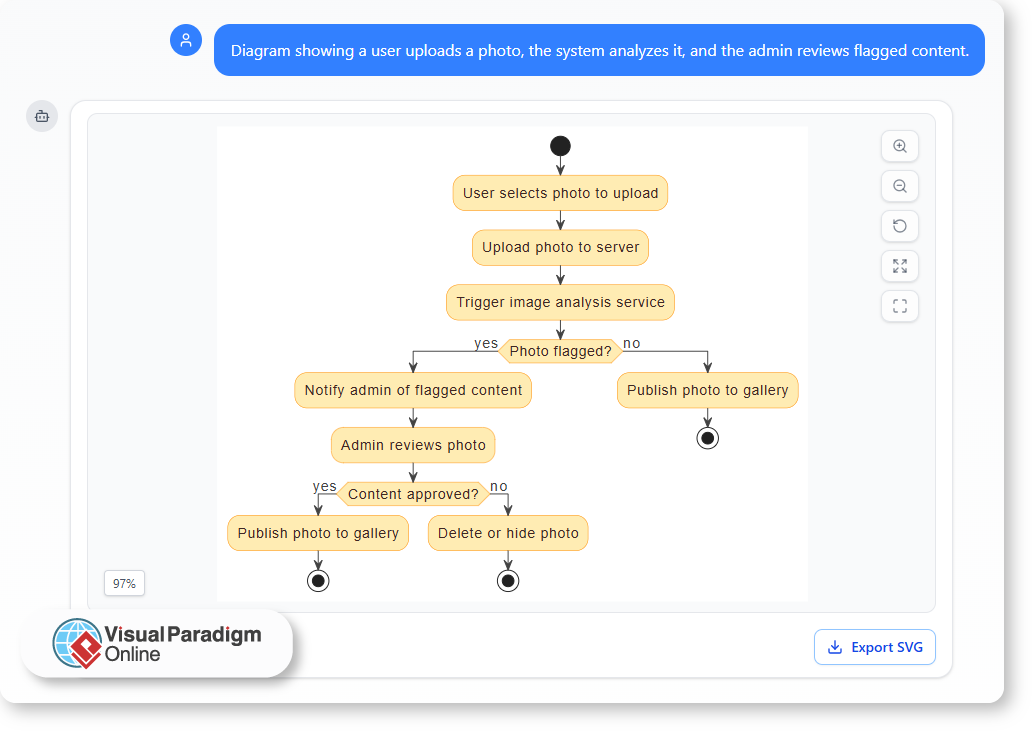Now Reading: Bridging Creative Thinking and Technical Modeling
-
01
Bridging Creative Thinking and Technical Modeling
Bridging Creative Thinking and Technical Modeling
How AI connects freeform ideas with structured design
Every great system starts with an idea — a rough concept scribbled on a whiteboard, a quick chat between teammates, or a few lines in a project note. These early thoughts are often creative and fluid, capturing possibilities rather than precision. The challenge begins when those ideas need to be turned into technical models that developers and analysts can act upon.
Artificial intelligence is now becoming the bridge between the two worlds, helping teams move seamlessly from brainstorming to structured, model-based planning.
The Gap Between Creativity and Structure
Creative thinking is open-ended. It thrives on ambiguity, allowing people to explore what could be. Technical modeling, however, demands structure — specific roles, data flows, and defined relationships.
The shift from “let’s imagine this feature” to “this is how the feature interacts with the system” can feel like a completely different language. As a result:
- Valuable early ideas often get lost before reaching design.
- Teams spend time reinterpreting what was originally discussed.
- Translating from freeform notes to formal diagrams slows down momentum.
AI is starting to eliminate that disconnect by transforming unstructured thoughts into organized models.
How AI Turns Ideas into Models
Modern AI assistants can interpret natural language descriptions and generate diagrams that reflect the logic behind them. With tools like Visual Paradigm’s AI Chatbot, you can describe your concept conversationally, and the system translates it into a structured model — whether that is a use case, activity, or class diagram.
For example, if you brainstormed an idea like:
“Diagram showing a user uploads a photo, the system analyzes it, and the admin reviews flagged content.”
The AI can immediately visualize this as a use case or activity diagram, complete with actors, processes, and interactions. That means you can move directly from ideation to analysis without redrawing everything from scratch.
This workflow encourages continuous refinement — as ideas evolve, the AI updates the structure to reflect new connections or functions.

Supporting the Brainstorming Process
AI does not restrict creativity; it enhances it. During brainstorming sessions, teams can freely express ideas in text or conversation. The AI then helps:
- Identify recurring elements and potential system components.
- Visualize interactions or dependencies that were only implied.
- Provide visual feedback that sparks new insights or refinements.
Instead of jumping prematurely into formal design, AI gives form to imagination — providing structure without limiting exploration.
From Freeform Notes to Actionable Plans
Once brainstorming concludes, the AI-generated diagrams serve as the foundation for technical modeling. Developers and analysts can:
- Review and validate the logic captured in diagrams.
- Add details such as attributes, operations, or dependencies.
- Share and refine the results collaboratively.
The transition from creativity to technicality becomes smoother and faster. Every stage of the process — from concept to implementation — stays connected through a consistent visual thread.
The New Creative Workflow
In the past, teams often needed to redraw ideas manually or reinterpret rough notes into structured plans. Now, AI modeling tools make it possible to stay in flow.
You brainstorm, the AI visualizes, and you refine together. It is an iterative cycle that keeps creativity alive while ensuring technical precision.
Tools like Visual Paradigm Online’s AI Chatbot embody this new workflow — where creative thinking and structured modeling no longer stand apart, but work hand in hand to bring ideas to life.
A Smarter Way to Design
The true value of AI in modeling is not just automation; it is continuity. By connecting freeform ideas and structured models, AI preserves the spirit of creativity while aligning it with technical clarity.
From a simple brainstorm to a detailed architecture plan, the journey no longer feels fragmented. With AI as the link, creative inspiration flows naturally into design — faster, clearer, and more collaborative than ever before.

